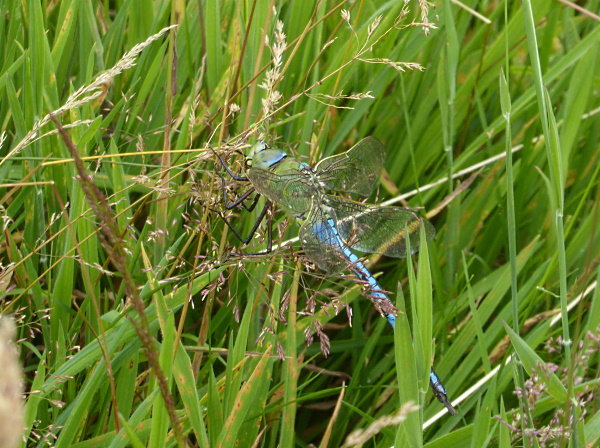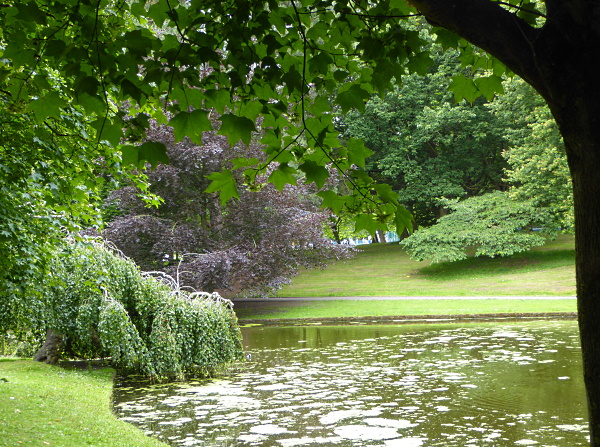
The park was quieter than usual, not as crowded with people (or birds) as we often find. This may have had something to do with the state of the water. The main lake was blotched with blue-green algae. Signs all around the railings warned people and dogs to keep clear: even the local fishermen and the model boat club have been banned.
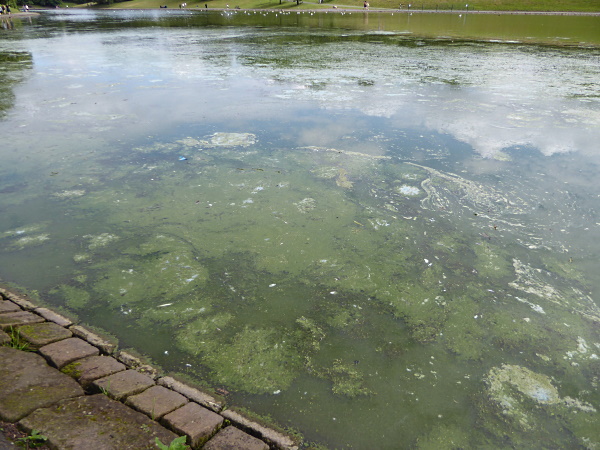
But most of the usual birds were there. Plenty of Coots, Mallards, Black-headed Gulls and Lesser Black-backed Gulls. A large flock of Canada Geese hung around for bread on the eastern bank. We never see them nest or breed here, so are they all juveniles? The Coots seem to be constructing nests all over the place, and we were surprised to see a Terrapin basking on the side of one. There used to be lots of Terrapins in the lake, ex-pets from the Ninja Turtles boom, but we thought they had all been removed when the lake was drained and cleared some years ago. Either one survived the purge, or it is a recent introduction. At the north end were a pair of Mute Swans with a single well-grown cygnet, a Cormorant on a post and a Great Crested Grebe. No sign of the Little Grebes, though.
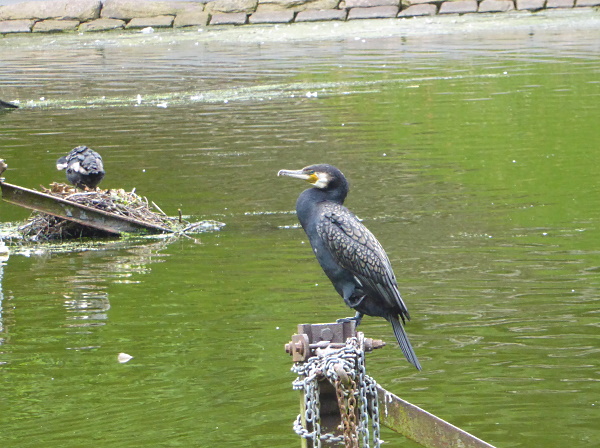
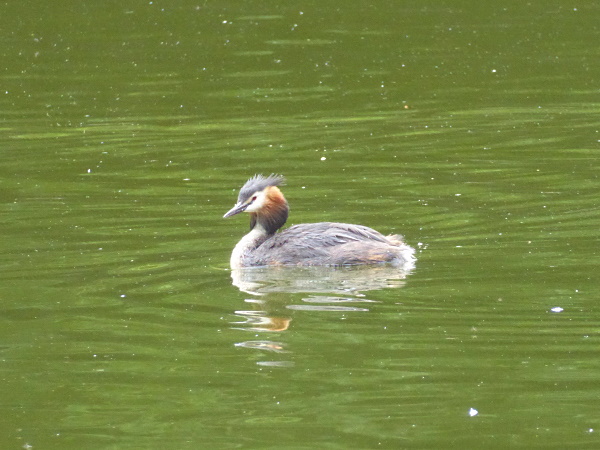
We don’t usually come here in summer, so it was lovely to see some familiar trees in full leaf. The Narrow-leaved Ashes (Fraxinus angustifolia ’Raywood’) were still dark green, saving their magnificent purple and gold colour for the autumn. The County Champion Black Walnut Juglans nigra opposite the bandstand was superbly elegant.
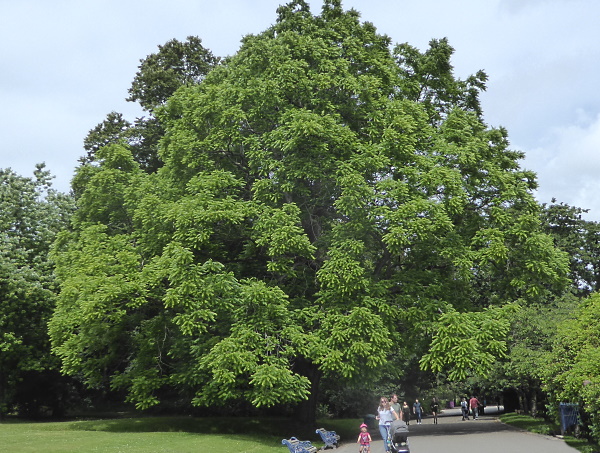
The tree just around the corner from the “Oasis in the Park” café was probably an Indian Bean Tree Catalpa bignonioides, although we discussed the atypical slight point or lobe on either side of some leaves. It looks as if it is on the way to being a Hybrid Catalpa Catalpa x erubescens and not quite the same as another on the other side of the stream.
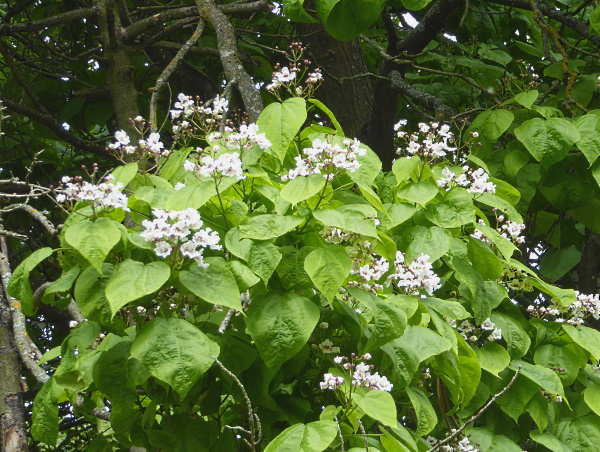
Near the old aviary a Comma butterfly sped past. On the nettles below the second Indian Bean Tree we found a Harlequin Ladybird nursery. The adults were just emerging from their larval coats. On this picture of three individuals, the top one is a larva, while the other two are adults with the larval coat clinging to their backs.
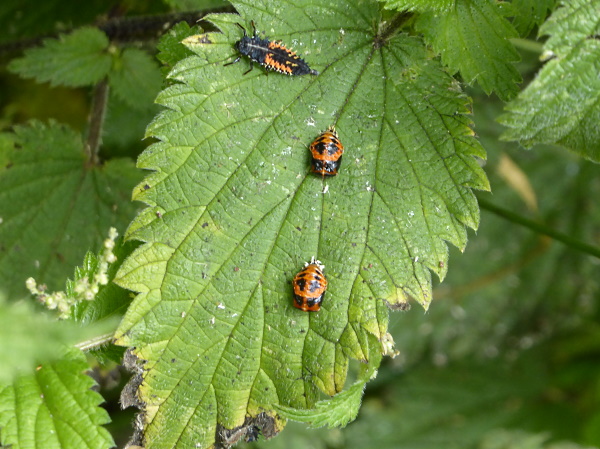
The stagnant stream by the café was completely covered with green scum, looking like a solid surface. Was this more of the blue-green algae? On it were thousands of long-legged flies. A Moorhen sat on the edge, not going in, but snatching as many flies as it could reach.
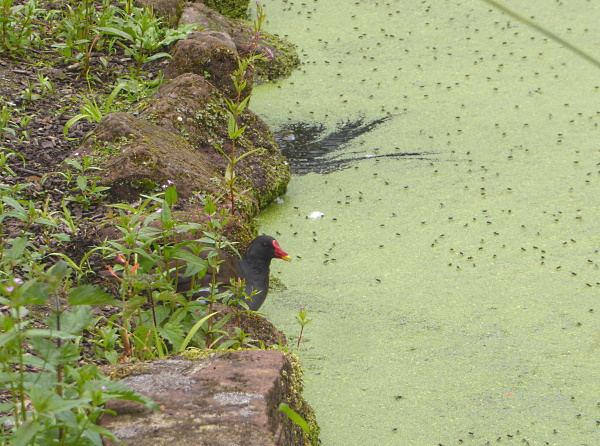
Just around the corner from the Eros Fountain, north of the path going east to the Plane Walk, three young trees were planted several years ago. We have noted them before, but now we see them in summer we are becoming more confident that they are Foxglove trees Paulownia tomentosa. The bark is a bit ridgier than we expected, but Mitchell’s tree book says this is typical of young trees.
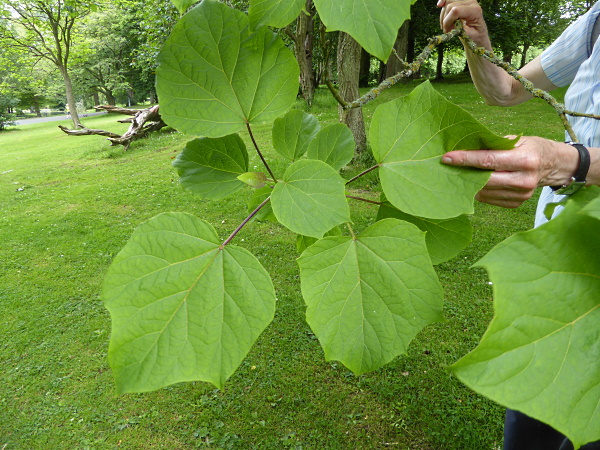
The trickling stream in the Fairy Glen looked a bit “off”, too, appearing greyish like dirty dish water. Some little girls were fishing with dipping nets, and were bringing out tiny Sticklebacks, so the fish weren’t affected by the odd water. This is where Kingfishers are often seen, although they may be away breeding, as there is nowhere in the park for them to dig riverbank nest holes. A mother Mallard had six ducklings, perhaps hatched that morning. (Only five in the picture, because one was lagging behind, as one always does.)
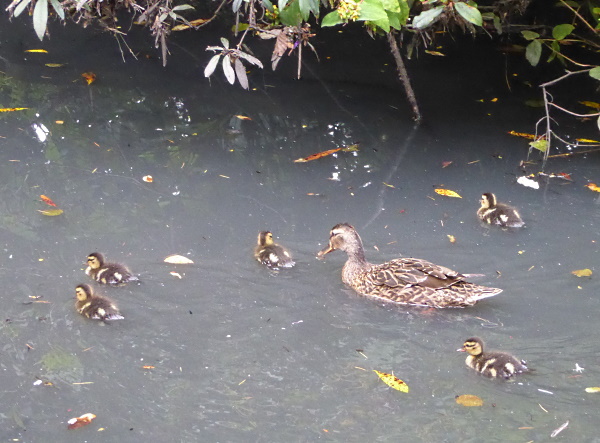
Along the wildlife woodland path we spotted a fleeting Wren and just one Ring-necked Parakeet. We stopped to listen to some odd calls from the woods, which turned out to be the contact calls of a brood of young Magpies, just fledged, looking like adults, but clambering clumsily around the branches. Earlier we had also found a Jay’s blue wing feather.

Some trees have a second flush of new leaves in the summer, known as Lammas growth. (Lammas Day is 1 August). Here’s a Red Oak showing the effect.
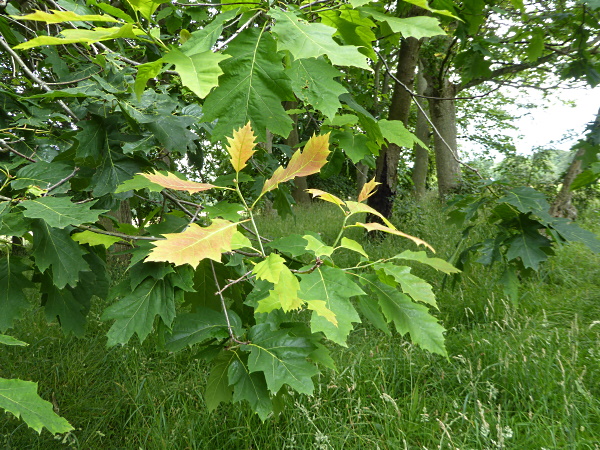
There is a wildflower meadow, but it is a few years old and there was nothing much growing but yellow Hawkweed. However, find of the day was an Emperor Dragonfly, resting on the grass, and seemingly tangled in a grass seed-head. When disturbed it seemed to struggle for a moment, flew off level and unsteadily for a few inches then soared away.
